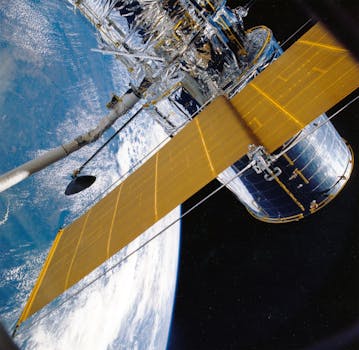
Beyond Earth: How Recent Advances Are Shaping Satellite Telecommunications
Satellite Telecommunications
Recent advances in satellite telecommunications are revolutionizing the way we communicate beyond Earth’s boundaries. With the increasing demand for global connectivity, satellite telecommunications has become a vital component of modern communication systems. The focus keyword Satellite Telecommunications is at the forefront of this revolution, enabling the transmission of data, voice, and video signals across the globe.
The use of satellites in telecommunications has been around for decades, but recent advances in technology have significantly improved the efficiency, capacity, and reliability of satellite communications. One of the key drivers of this advancement is the development of new satellite constellations, such as OneWeb and Starlink, which are designed to provide high-speed, low-latency internet connectivity to remote and underserved areas.
These satellite constellations are composed of hundreds of small satellites that operate in low Earth orbit (LEO), providing a significant improvement in coverage and capacity compared to traditional geostationary satellites. The use of LEO satellites also reduces the signal latency, making it possible to support real-time applications such as video conferencing and online gaming.
Advances in Satellite Technology
The recent advances in satellite technology have been driven by innovations in several areas, including satellite design, propulsion systems, and communication protocols. One of the significant advancements is the development of electric propulsion systems, which provide a more efficient and cost-effective way to maneuver satellites in space.
Another area of innovation is the use of advanced materials and manufacturing techniques, such as 3D printing, to reduce the weight and increase the efficiency of satellites. This has enabled the development of smaller, more agile satellites that can be launched at a lower cost, making satellite telecommunications more accessible to a wider range of users.
The development of new communication protocols, such as the use of laser communication, is also improving the efficiency and security of satellite communications. Laser communication systems use laser beams to transmit data between satellites, providing a higher bandwidth and more secure connection compared to traditional radio frequency (RF) systems.
Impact on the Industry
The recent advances in satellite telecommunications are having a significant impact on the industry, enabling new applications and services that were not previously possible. One of the key areas of impact is in the provision of internet connectivity to remote and underserved areas, where traditional terrestrial networks are not available.
Satellite telecommunications is also playing a critical role in the development of the Internet of Things (IoT), enabling the connection of devices and sensors in remote areas, such as in agriculture, transportation, and energy management. The use of satellite communications is also improving the efficiency and safety of transportation systems, such as in the provision of navigation and communication services for aircraft and ships.
Conclusion
In conclusion, recent advances in satellite telecommunications are transforming the way we communicate beyond Earth’s boundaries. The development of new satellite constellations, advances in satellite technology, and innovations in communication protocols are driving this revolution, enabling new applications and services that were not previously possible. As the demand for global connectivity continues to grow, satellite telecommunications will play an increasingly important role in shaping the future of communication systems.



